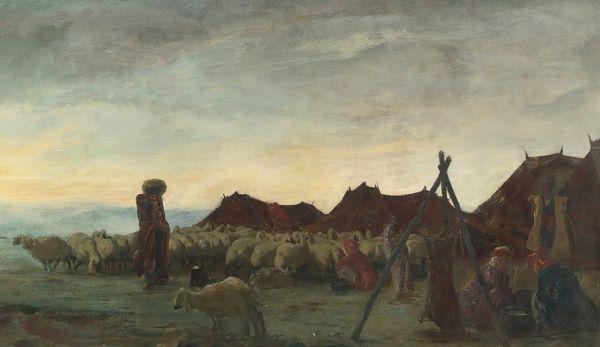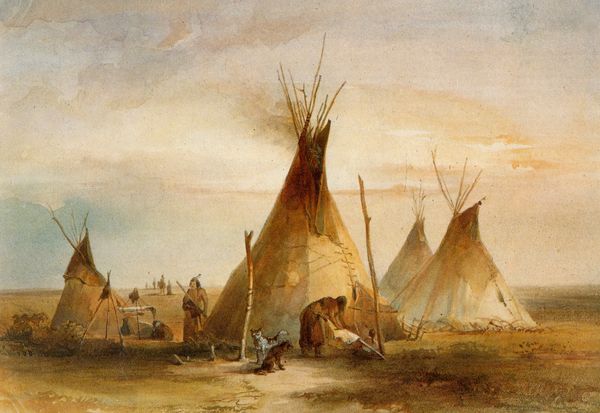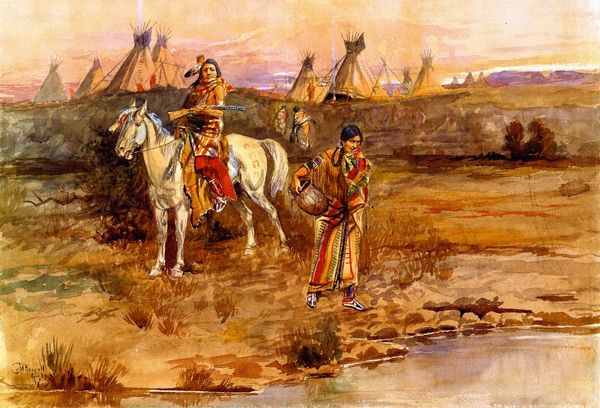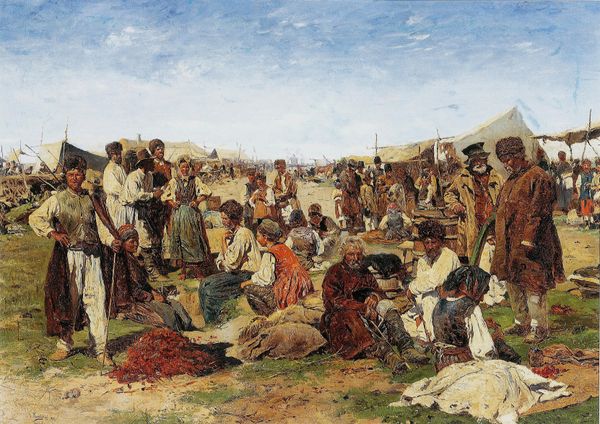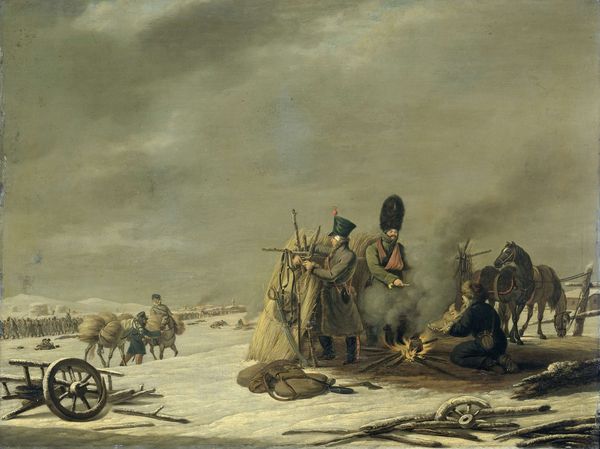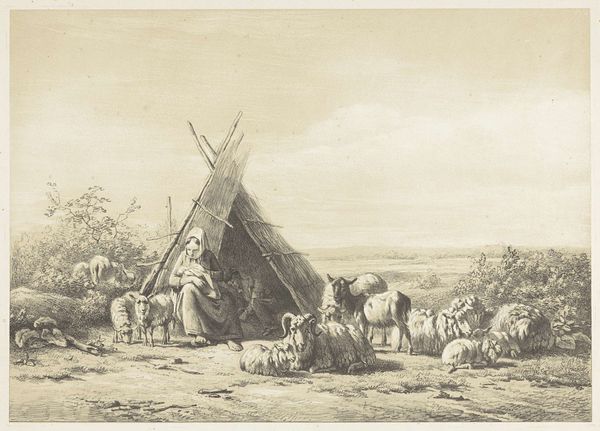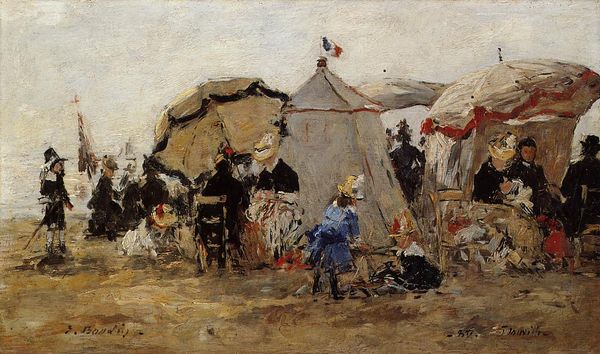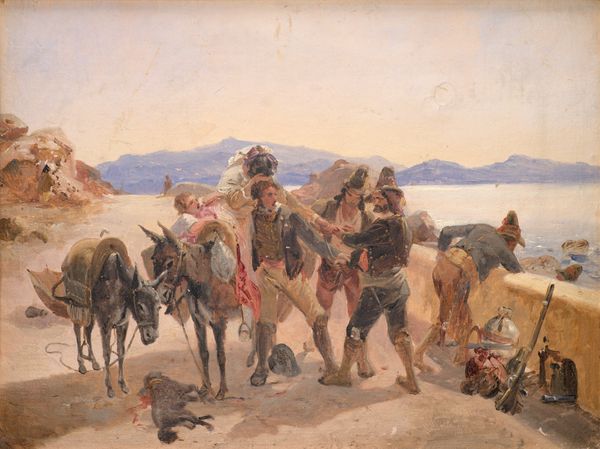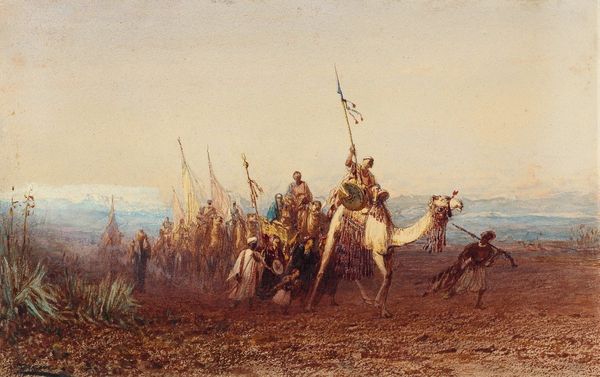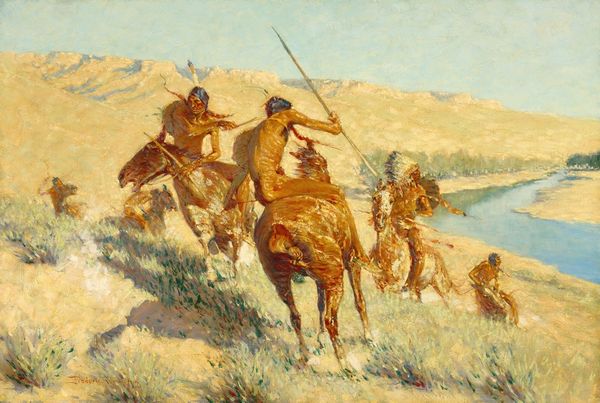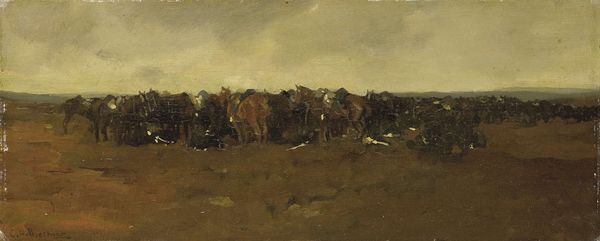
Copyright: Public Domain: Artvee
Curator: This artwork is "Zigeunerlager in der Puszta," or "Gypsy Camp in the Puszta," painted sometime between 1875 and 1880. The artist is Anton Romako. Editor: Immediately, I'm struck by the somber, almost desolate, feel of it. It's like a forgotten corner of the world, yet there's an intimacy too. It feels both epic and intensely personal. Curator: Romako presents a romanticized view of Roma life, infused with the prevailing attitudes of the time. Notice the symbols of freedom: the wide open Puszta landscape of Hungary, their portable dwellings. Yet it can also represent a certain marginalization. These symbols are potent because they cut both ways. Editor: Yes, I see that tension. There's freedom in this open landscape, but also a certain starkness. The colours are muted; lots of browns and ochres, echoing the earth. The tents are almost ghostly in the sunlight. This painting stirs complex emotions—it's not all sunshine and roses, is it? I see struggle, even in this 'romantic' depiction. It kind of reminds me of an old faded photograph of a family from a different age, and the questions, memories and silences that lie dormant within such mementos. Curator: That muted palette reinforces a sense of timelessness. Romako doesn’t shy away from depicting a community separate from the developing world around them. He presents them almost as a people outside of time. I see this as an exercise of portraying cultural memory. Editor: I also see a lot of shadow. Shadows within the tents, under the figures... it adds another layer of depth and mystery. It reminds me a bit of those hazy, dreamlike landscapes, the kind where things aren’t quite clear. Maybe Romako’s trying to suggest that their stories, their realities are often unseen, relegated to the shadows? Curator: The symbolic function of light and dark as signifiers of what is knowable, visible and unseen in a culture—it is certainly an avenue worth considering here. It's not just a physical representation; it evokes ideas of knowledge, oblivion, and the borders between worlds. Editor: This feels like more than just a scene—it's a poem about resilience, a song for those living on the margins, a forgotten myth still breathing quietly. Thanks for sharing this glimpse; I'm definitely carrying this feeling with me today. Curator: And with that, let us both remember the rich symbolism art carries and consider its weight as we continue our explorations today.
Comments
No comments
Be the first to comment and join the conversation on the ultimate creative platform.

